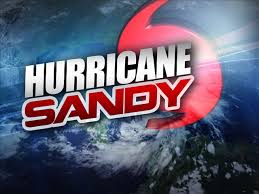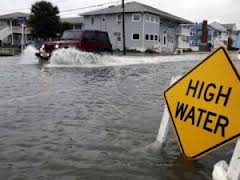- April 28, 2020
Hurricane Sandy Mold Problems

After Super Storm Sandy subsided, many homes were left in ruins. Many homes near the eye of the storm were completely destroyed beyond recognition. Other homes and businesses survived but encountered mild to extreme water damage from flooding or other exterior damage that let in unwanted water. Many people called emergency restoration companies but were unable to get someone out immediately due to the high volume of people that needed help.
Understandably, these home and business owners were looking to get their property back to normal as soon as possible. So many people responded to this problem by starting the demolition on their own. While people were doing the right thing and removing personal belongs and cutting away sheet rock; they missed out on some very important steps that only professional restoration companies with proper equipment are capable of. Neglecting to use air movers/de-humidifiers for drying and using bleach rather than anti-microbial solutions has left many properties in a very vulnerable situation.

After all the standing water is gone, and damaged building material has been taken out the structure may look dry to the naked eye but using a moisture meter will tell you otherwise. When anything that gets wet, the outer layer dries first but takes several days using the restoration equipment mentioned earlier to dry out properly from within. Super Storm Sandy hit an unsuspecting area (Northeast) and did so at the very end of hurricane season. In areas like Florida or New Orleans, it is very easy to tell a property is holding excess moisture because of how the heat/humidity makes it obvious. After Sandy, all the rain and flooding were followed by cold temperatures which made it easy for all the excess moisture to hide. Once mold has started to grow it just doesn’t disappear. It goes dormant but once you add moisture/humidity it will come right back. Mold loves moisture, dark areas and especially drywall. When sealing up the walls, you’re locking the moisture behind the walls. Since many people did not take the proper dry out steps and use treatments like anti-microbial (Anti-Mold) solutions where necessary, they may be in for a very unpleasant surprise when they weather starts to heat up.

As mentioned earlier, another mistake that we saw is the extensive use of bleach in an attempt to prevent or stop mold growth. Bleach should only be used on non-porous surfaces like tile and metal. When used on material like wood or drywall you encounter a problem. The base of bleach is water, so after the alcohol evaporates you are essentially feeding any mold growth in the areas you attempted to treat. Using a anti-microbial solution is a better alternative, but even this should only be done after a proper dry out.
If your home or business was hit by Super Storm Sandy and you took on the restoration process on your own, don’t panic. If you have not yet begun the rebuild process, we recommend getting a mold inspector or restoration company to get out and assess your property. If you have already started or finished reconstruction, having a mold inspector test your indoor air quality may shed some light on whether or not severe mold growth may be in your future when the temperatures warm up. The results may give an answer you didn’t want to hear, but early detection will likely save you a great deal of money in the long run.
Written by Adam Pacha
MI&T | Mold Inspection & Testing

